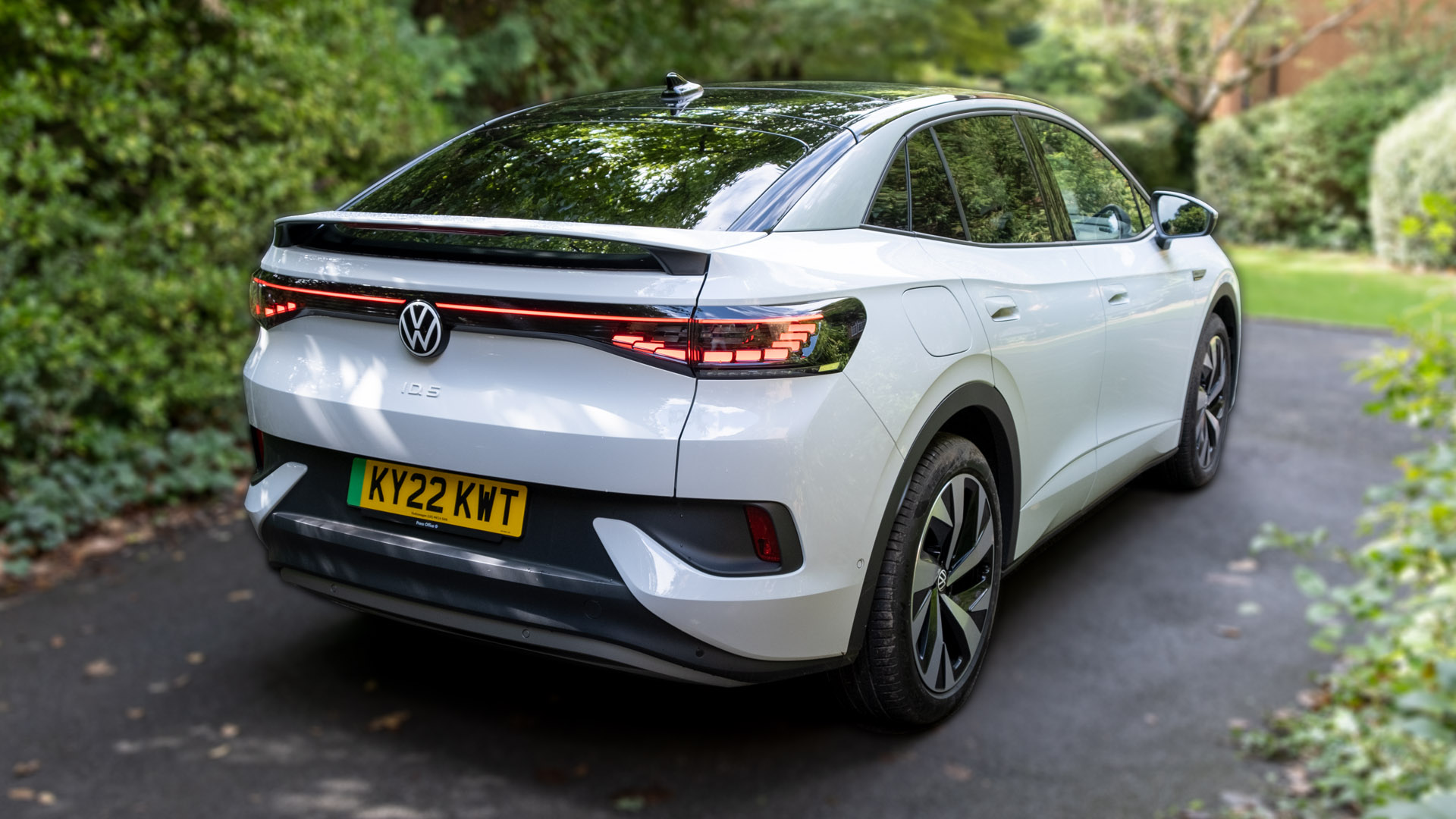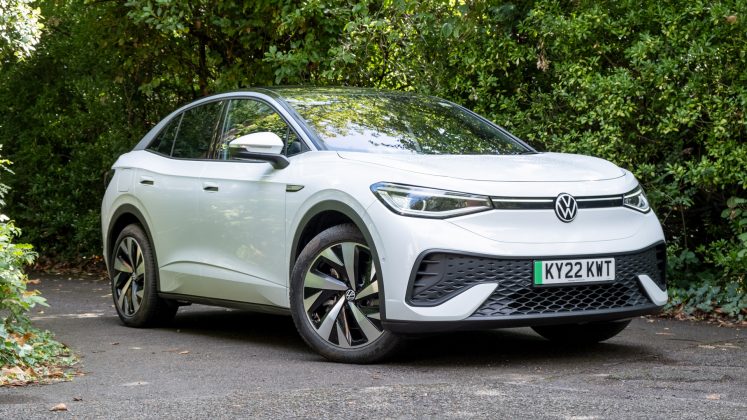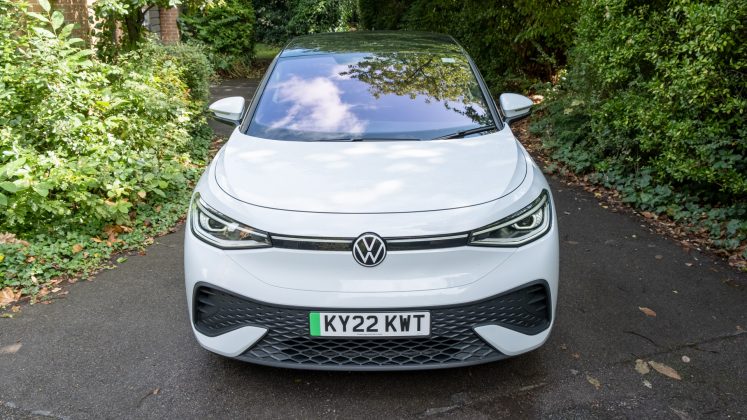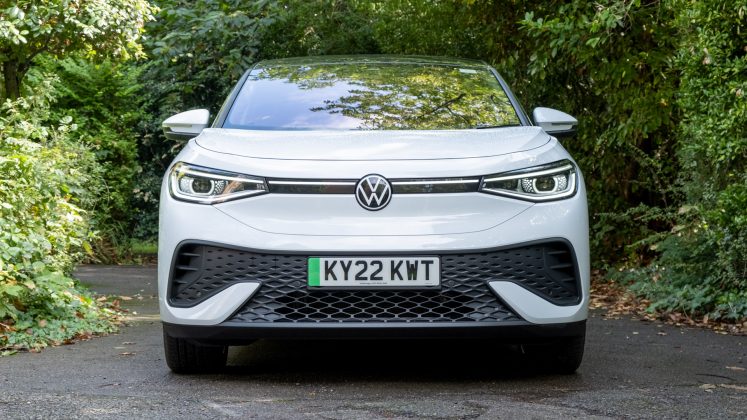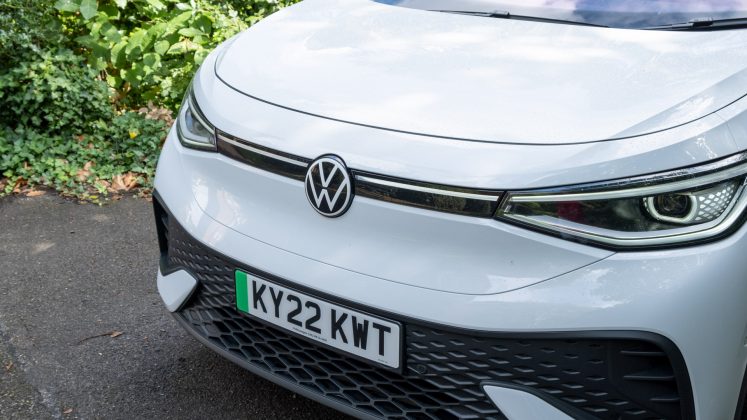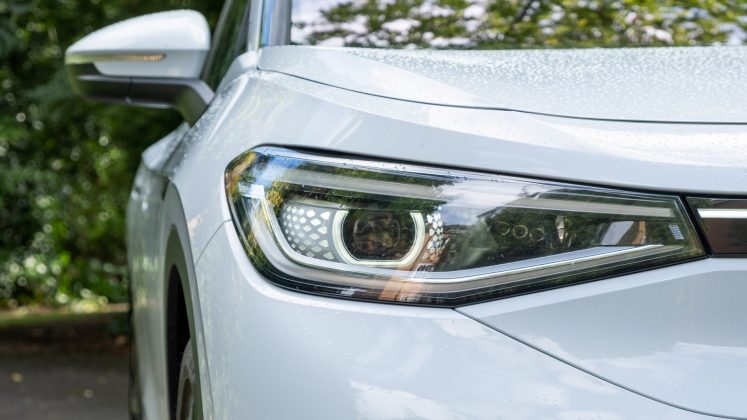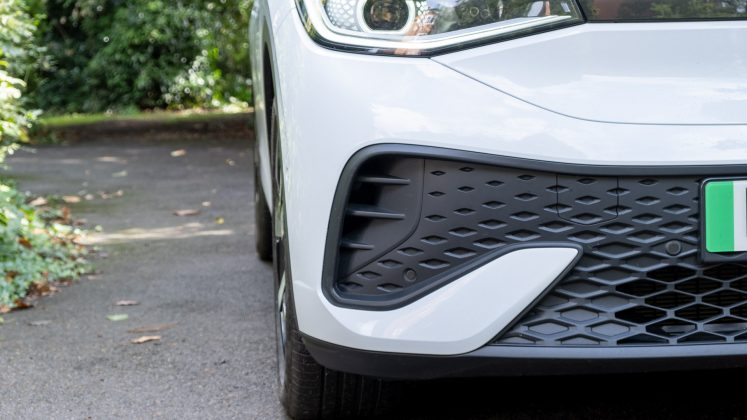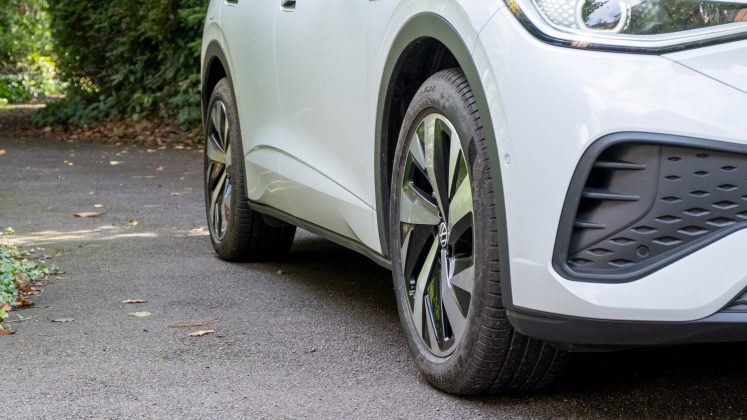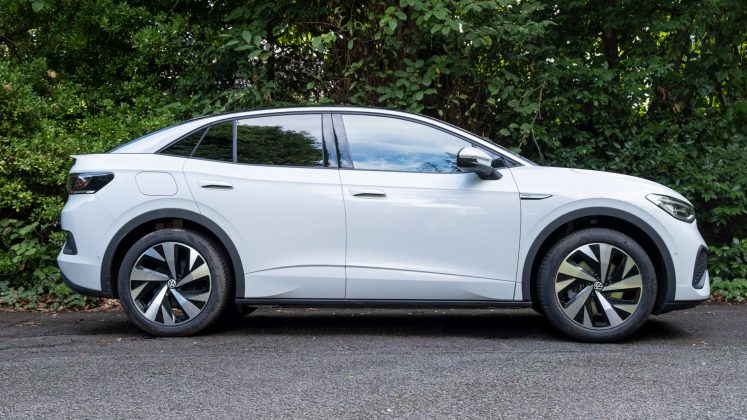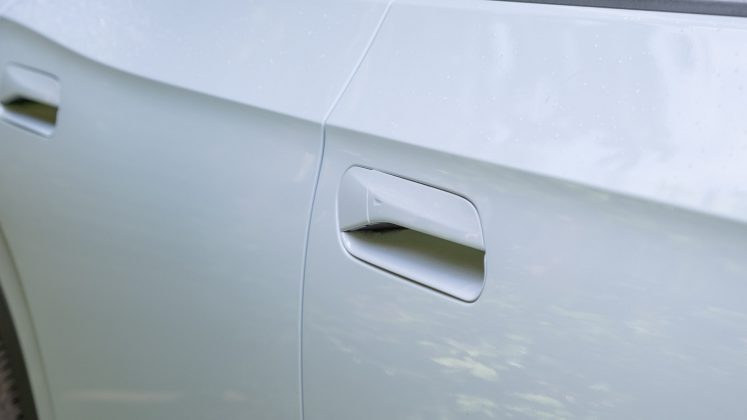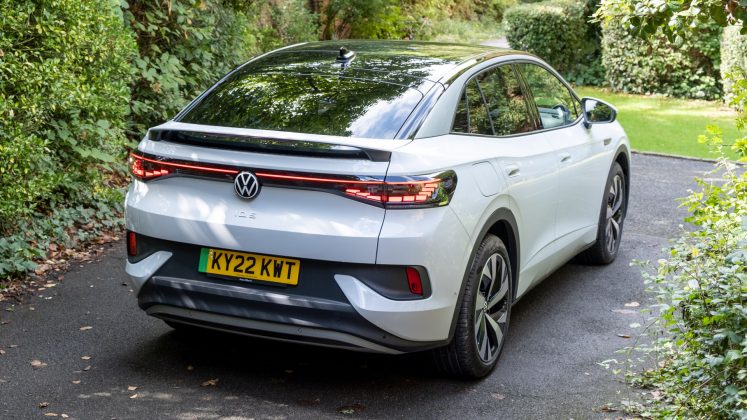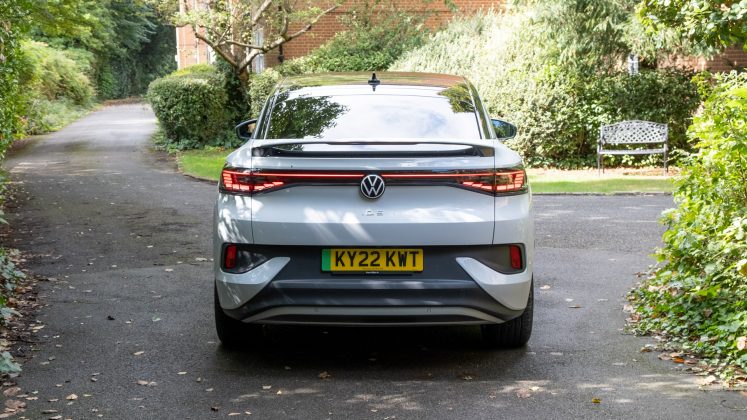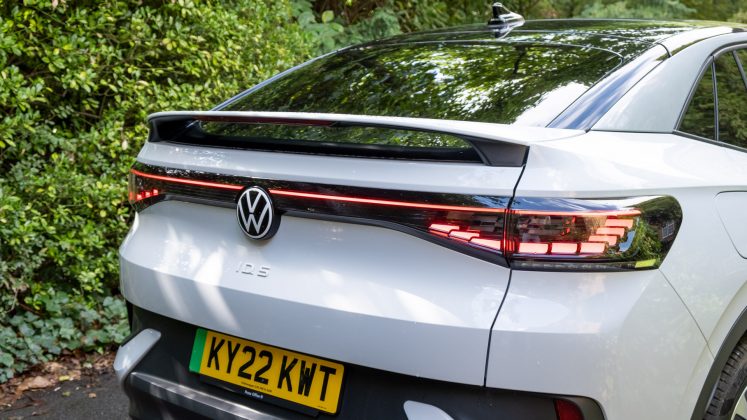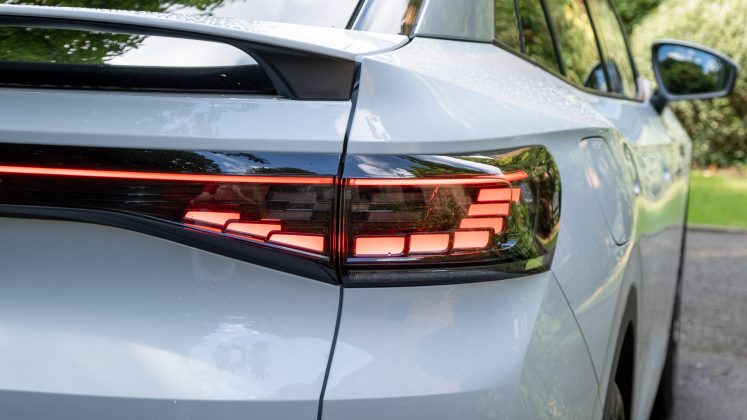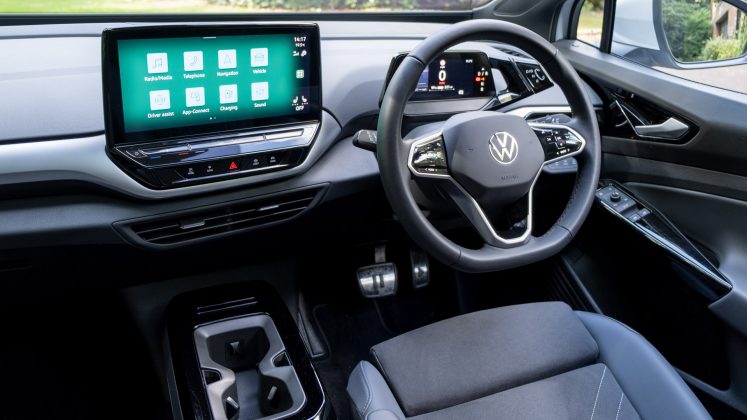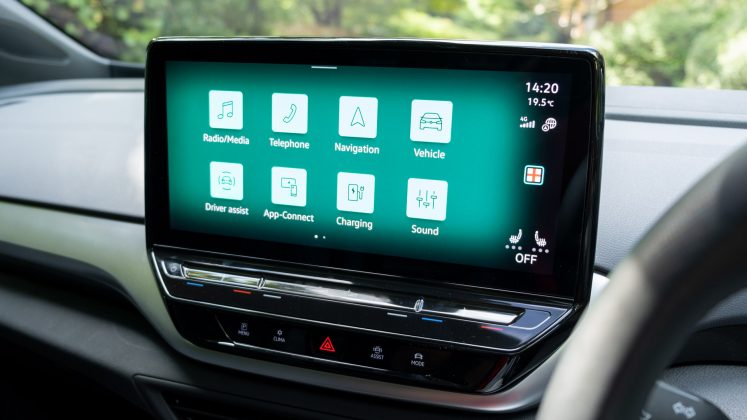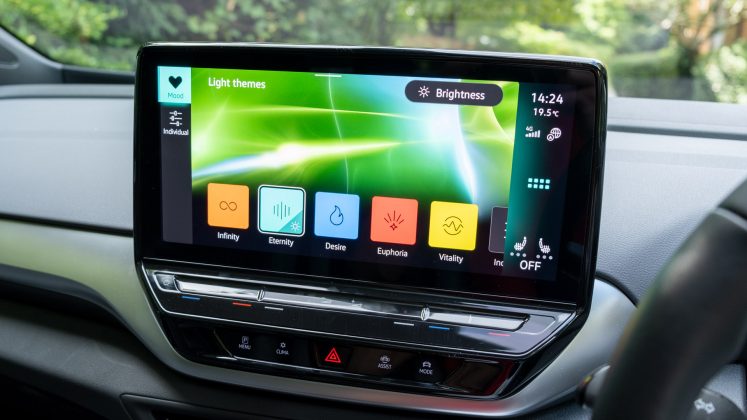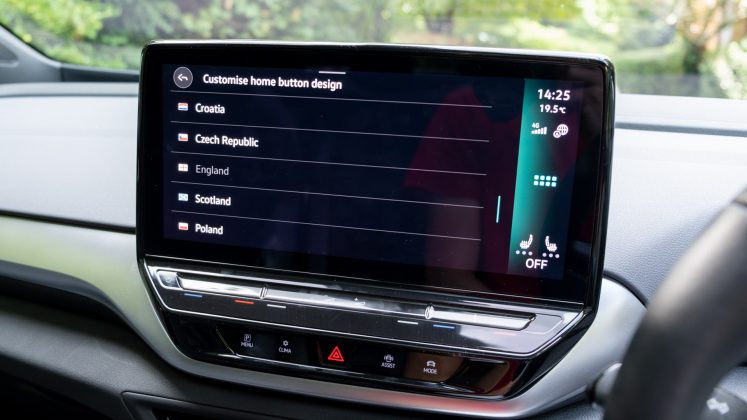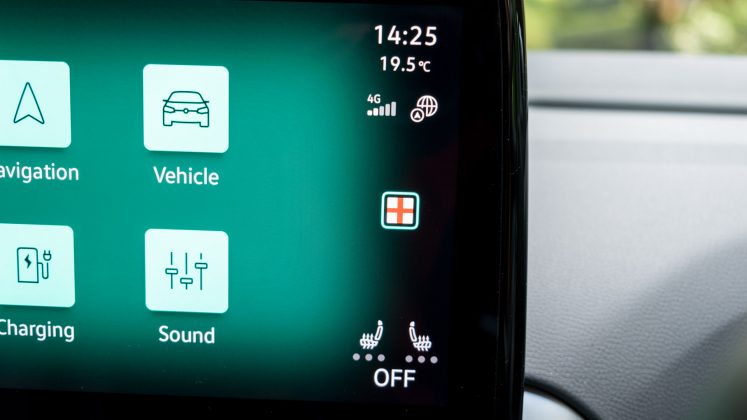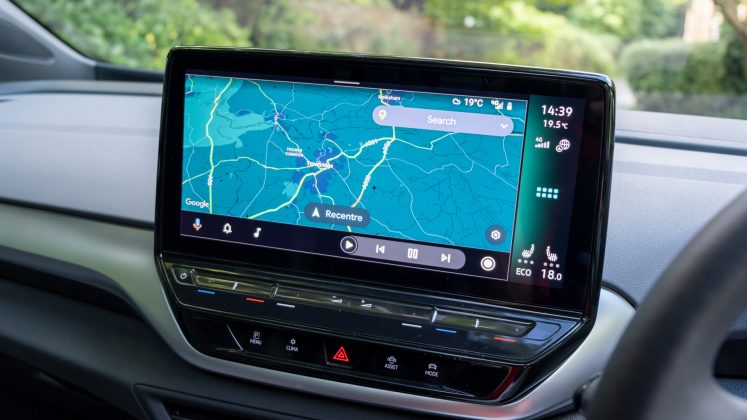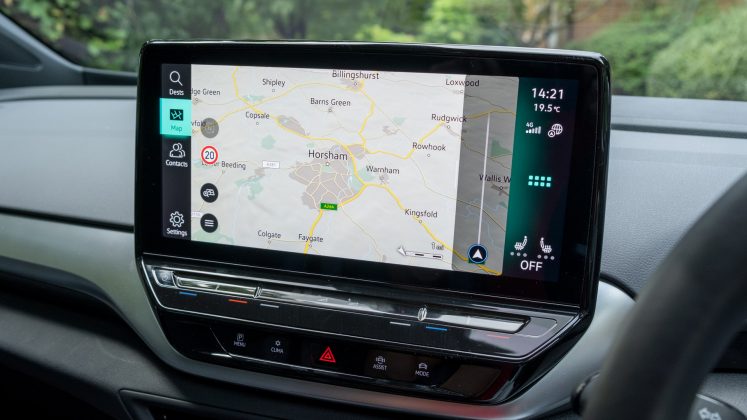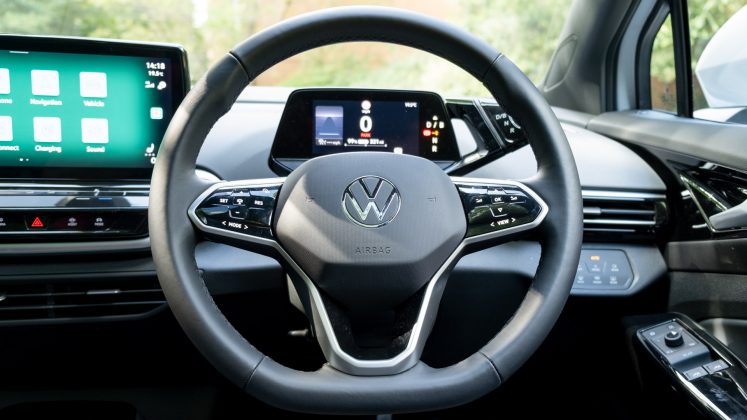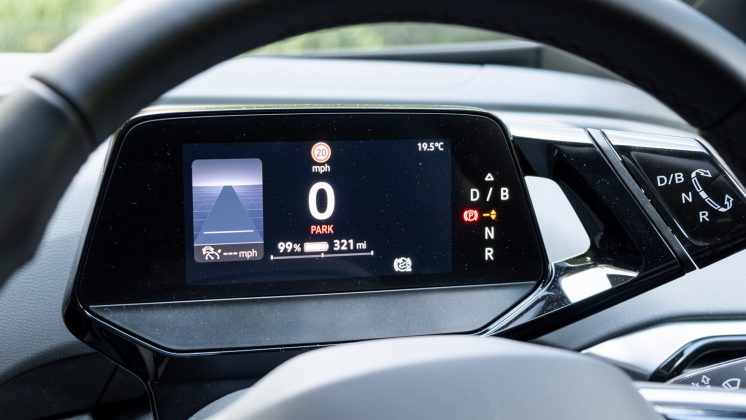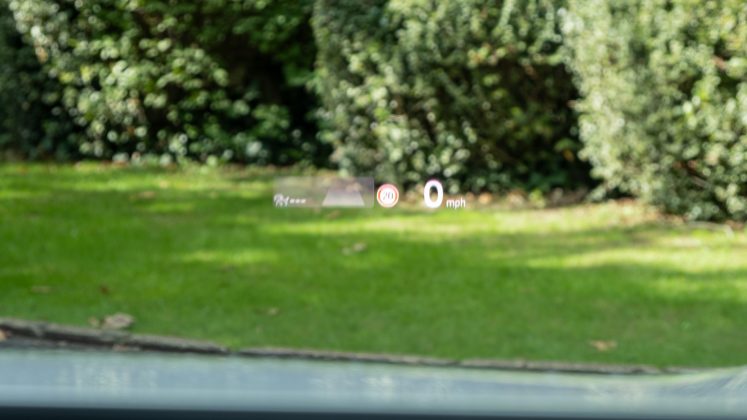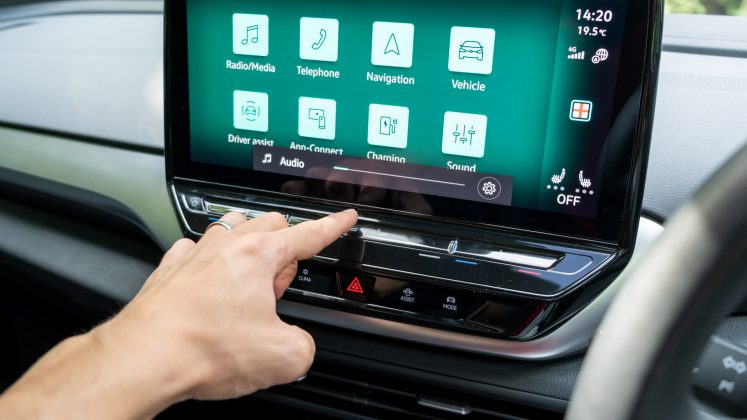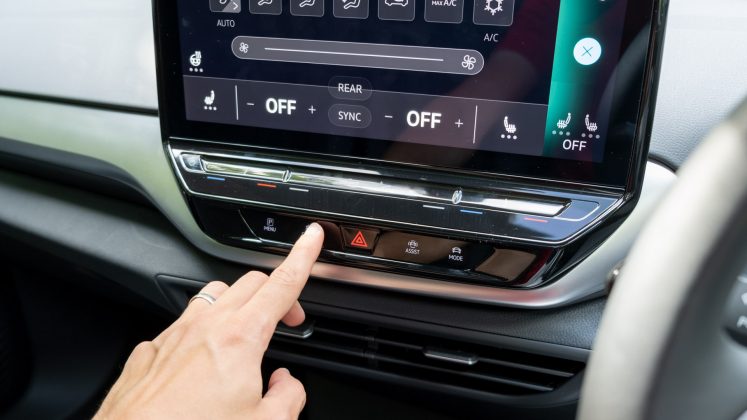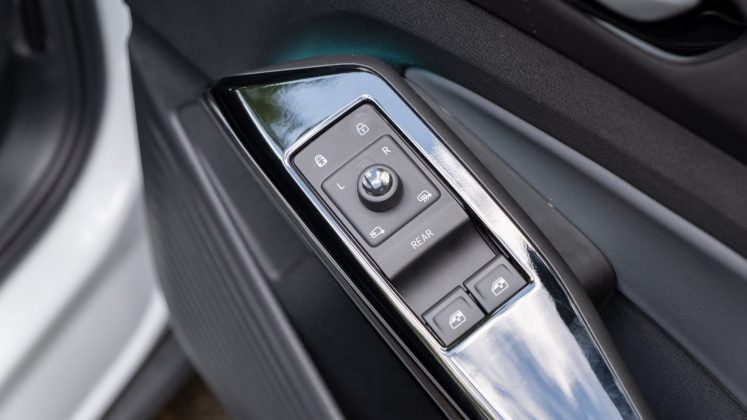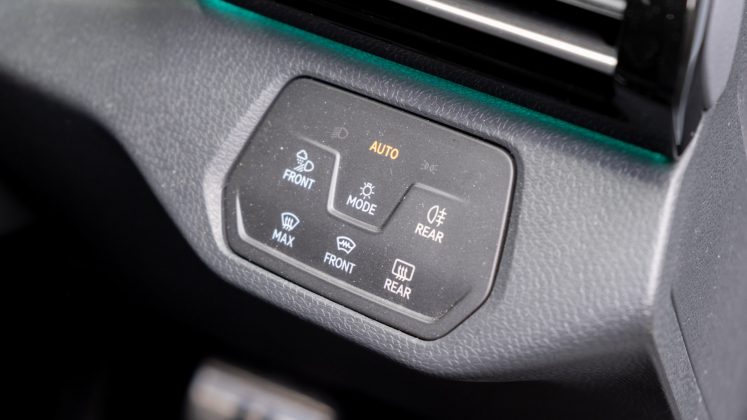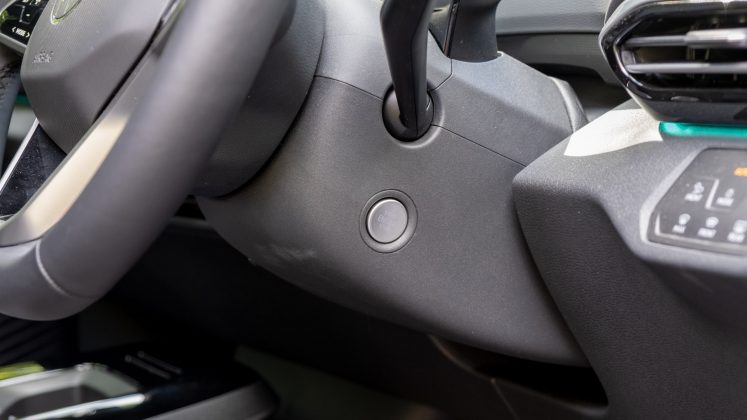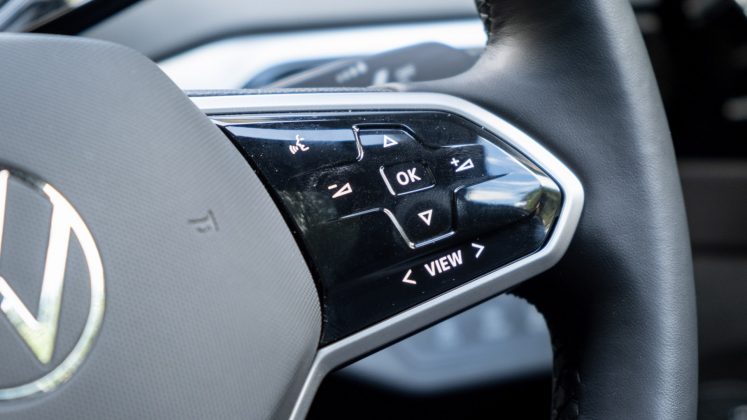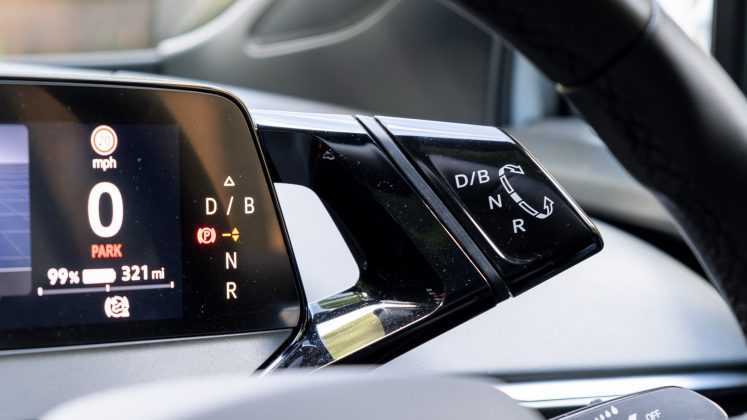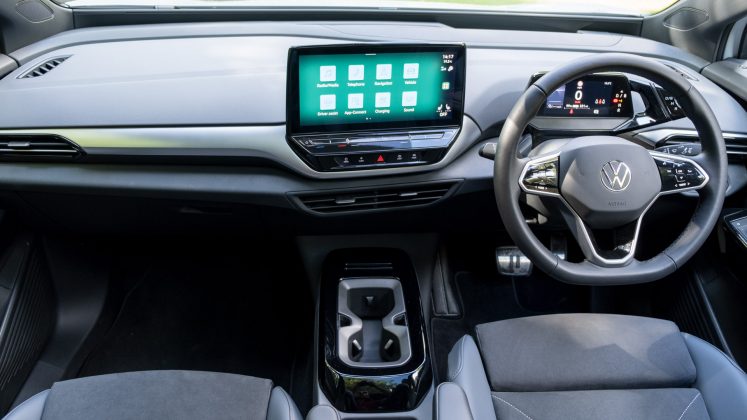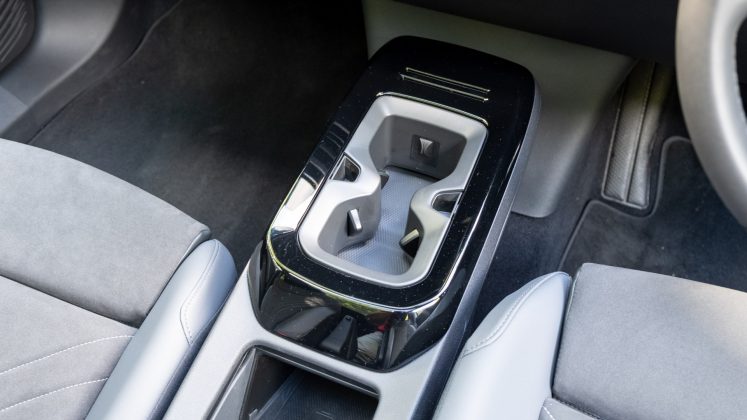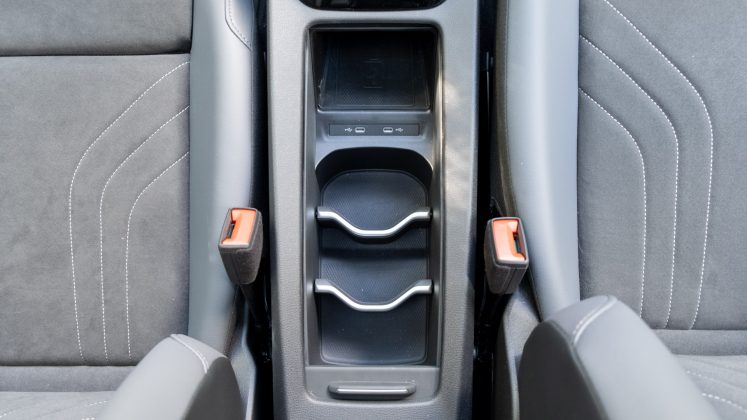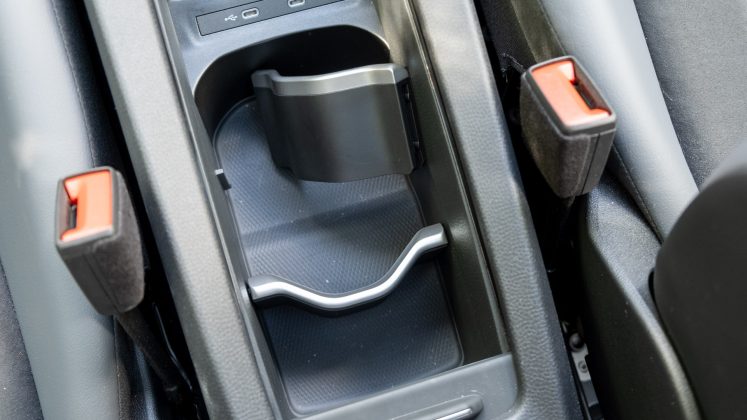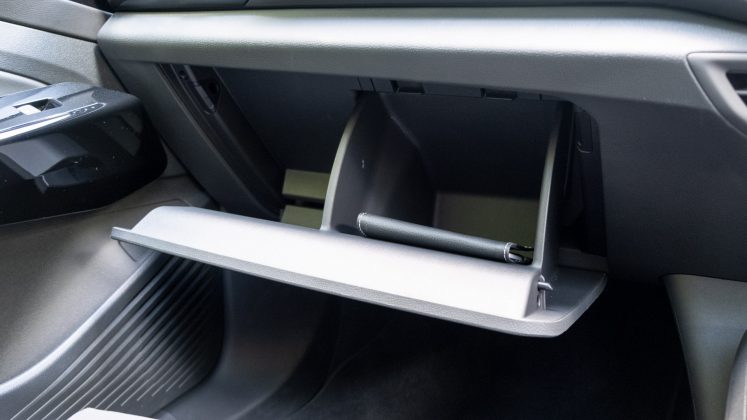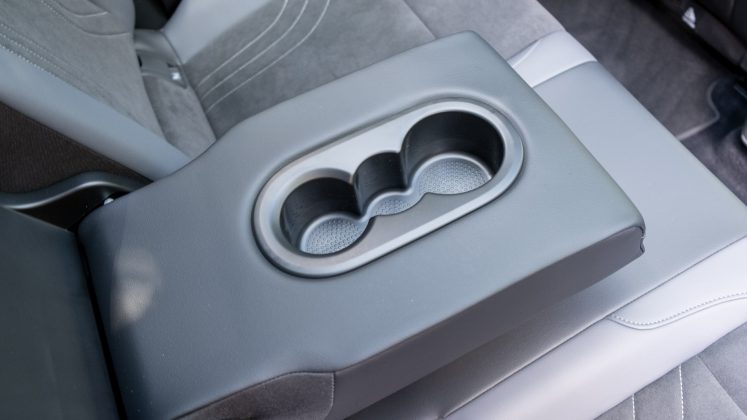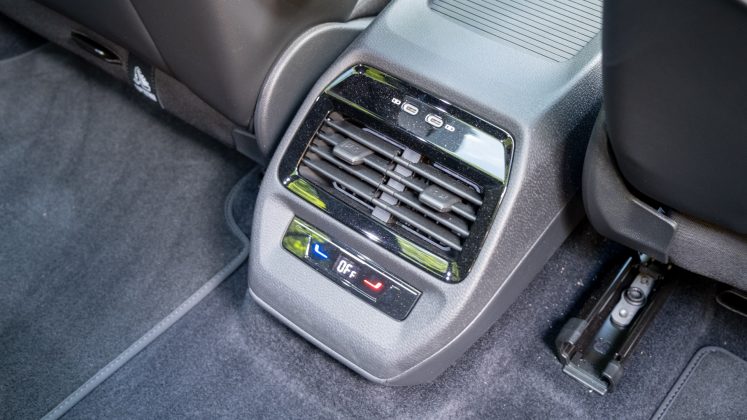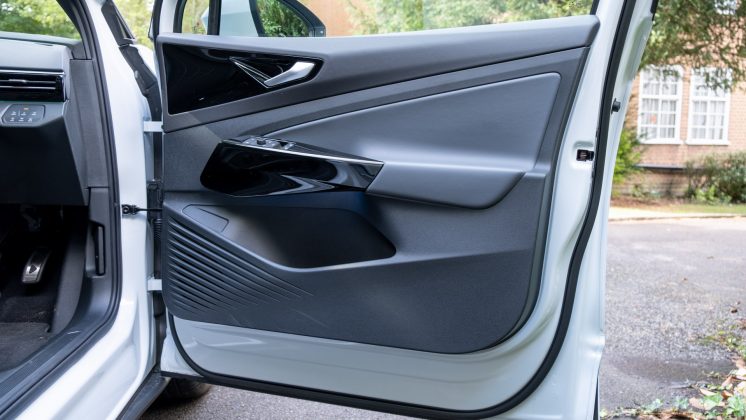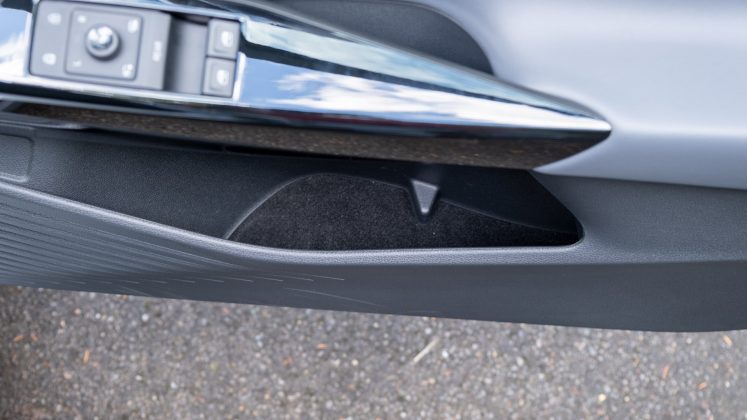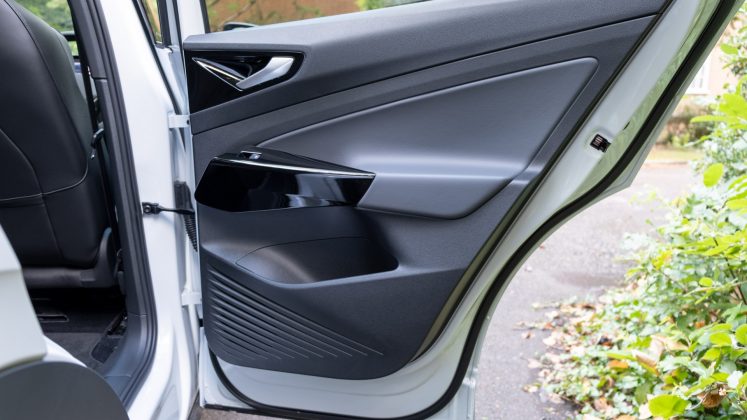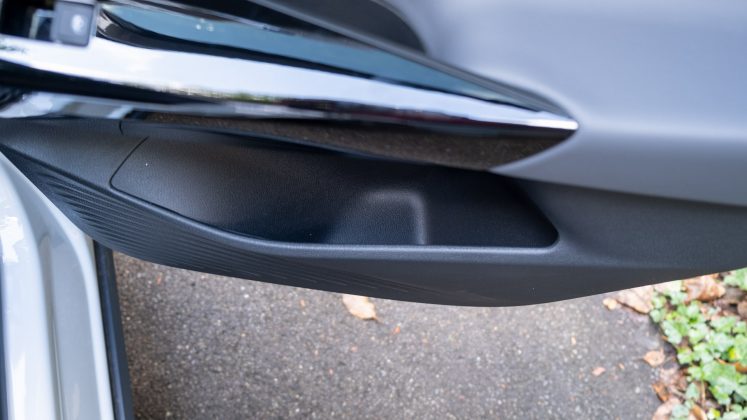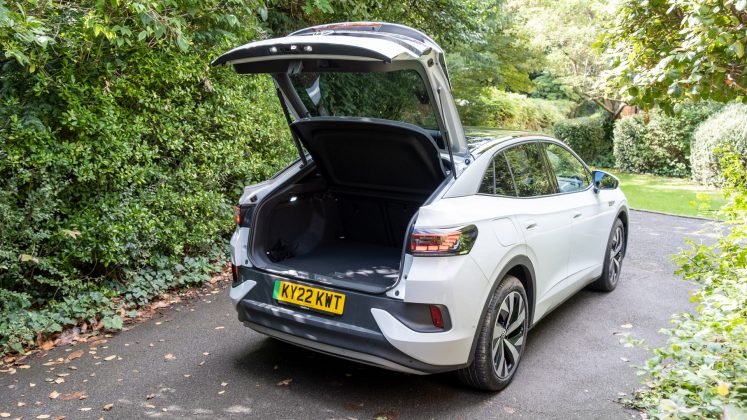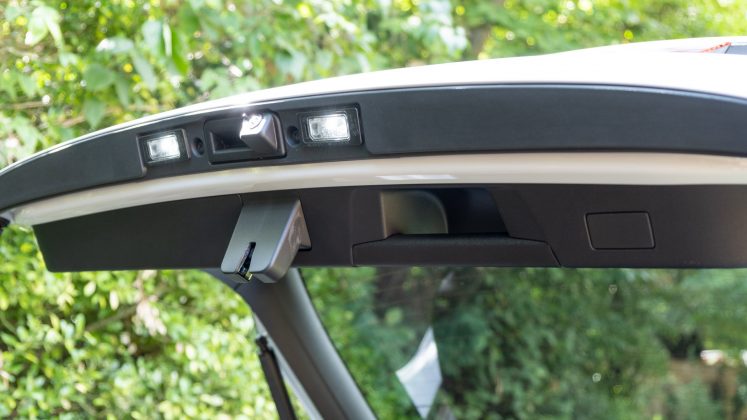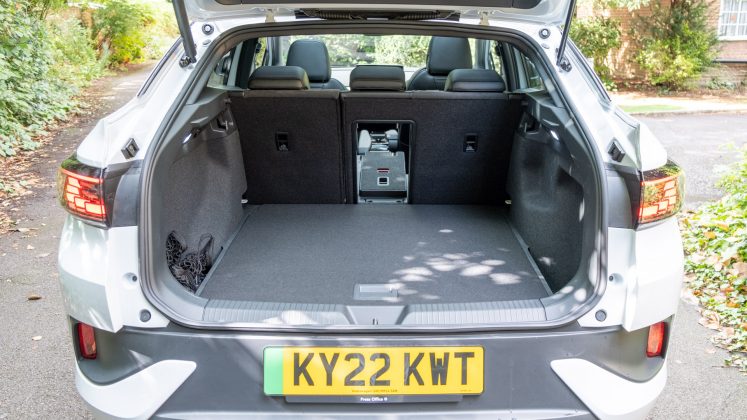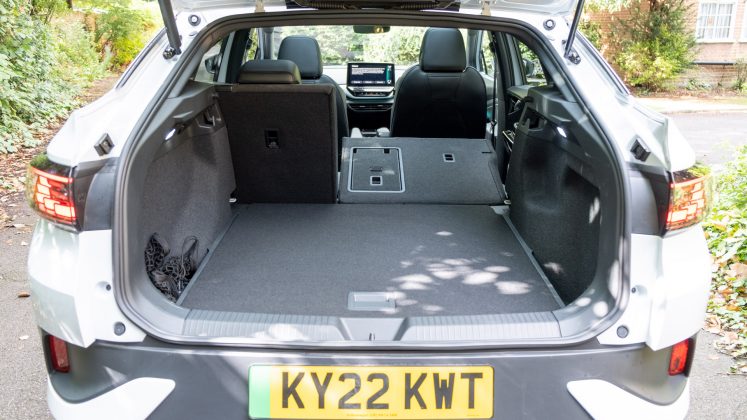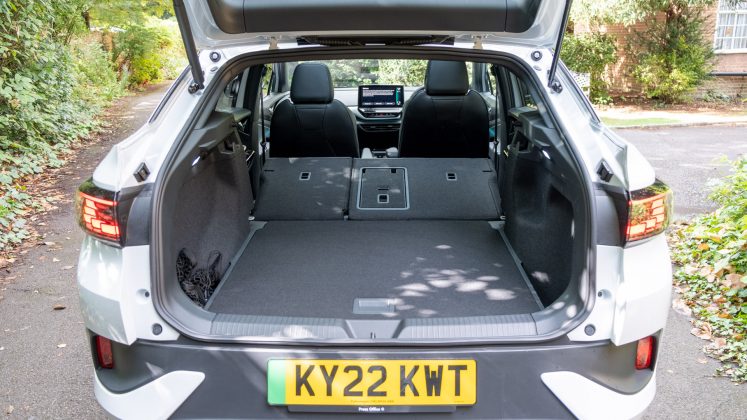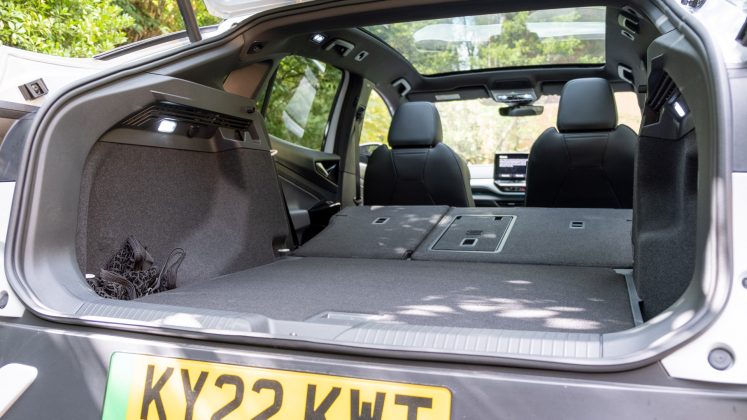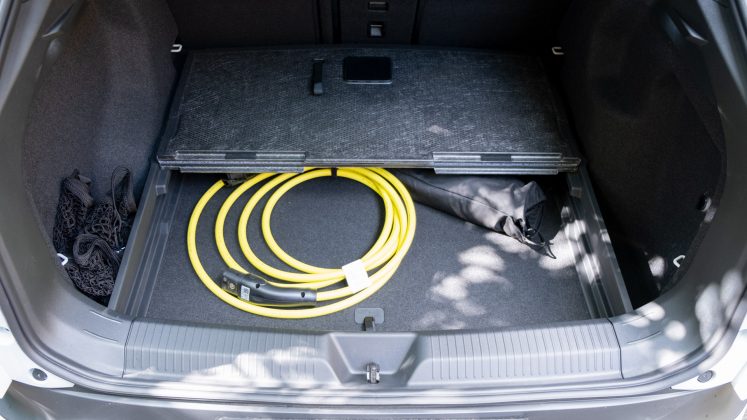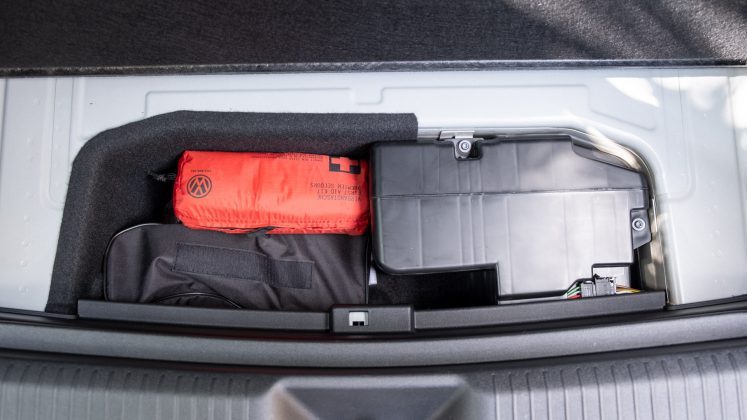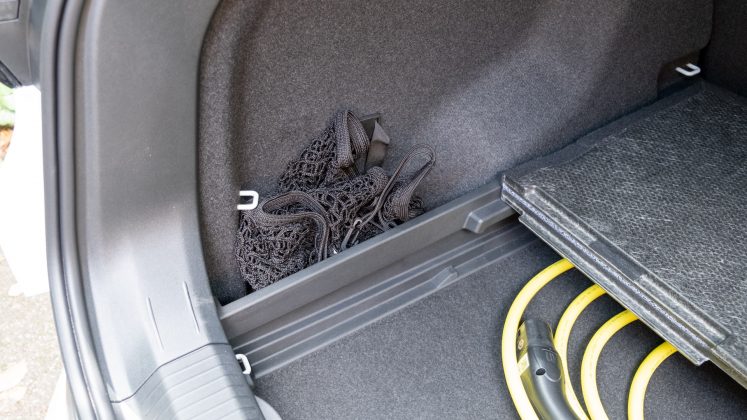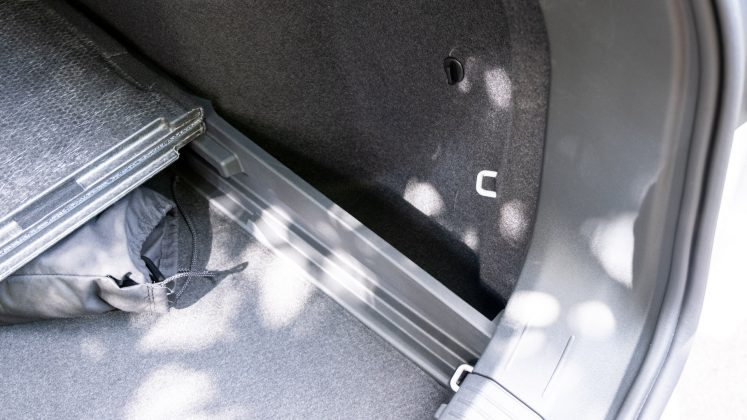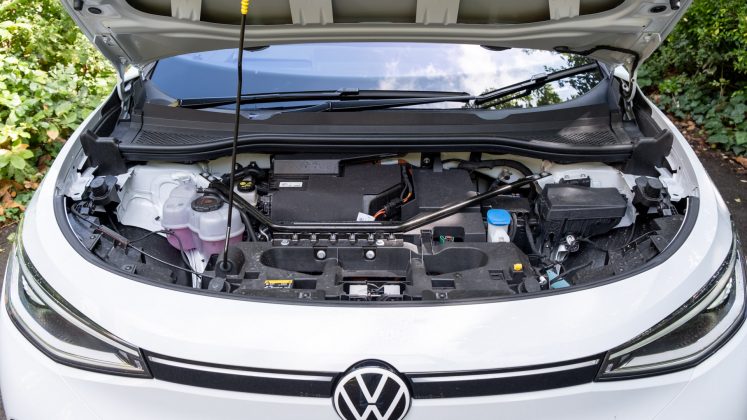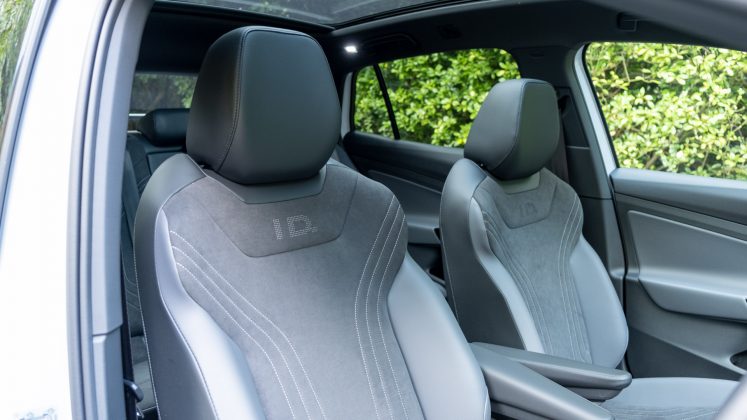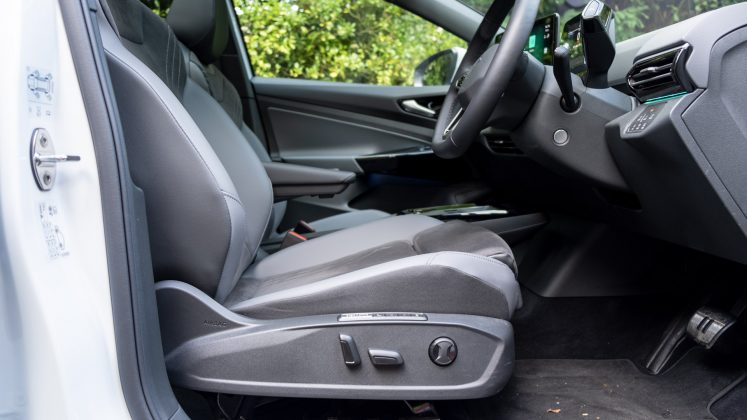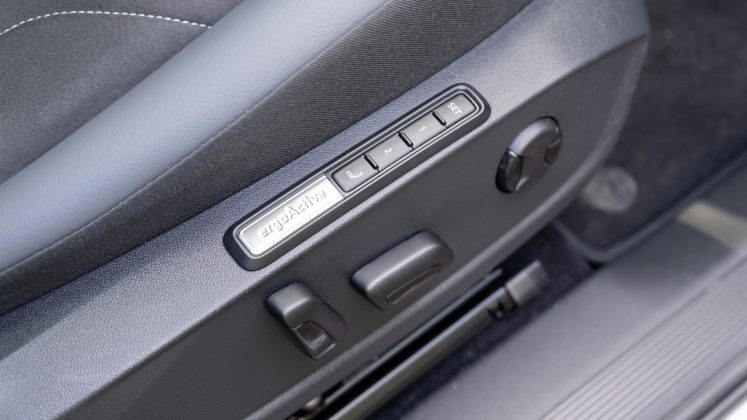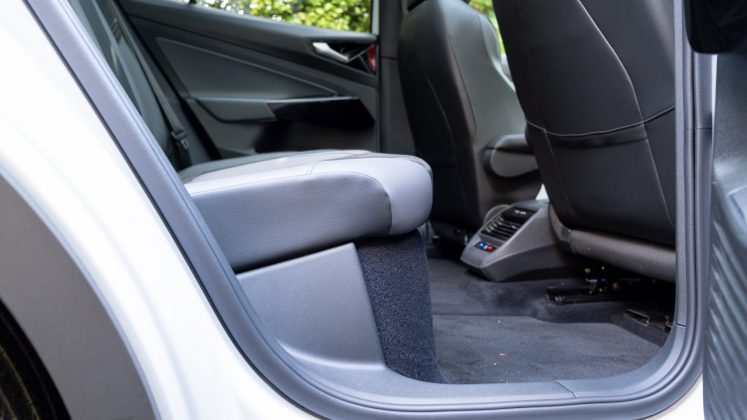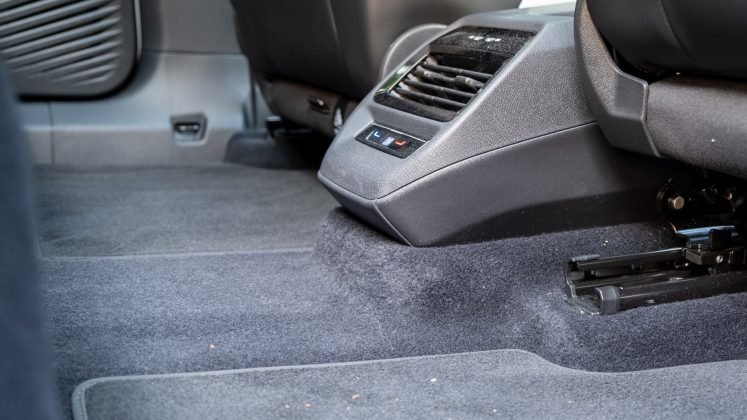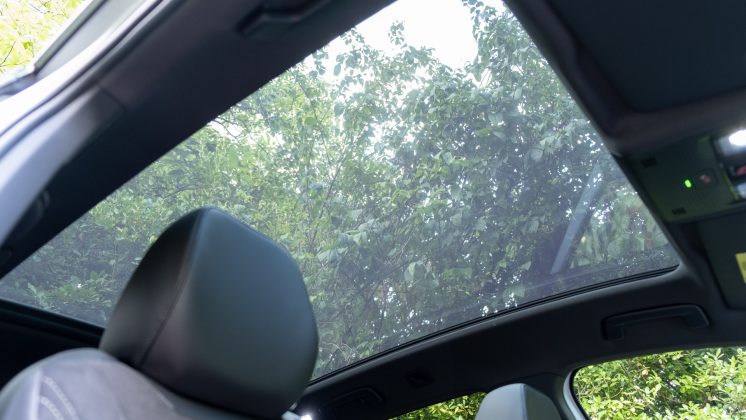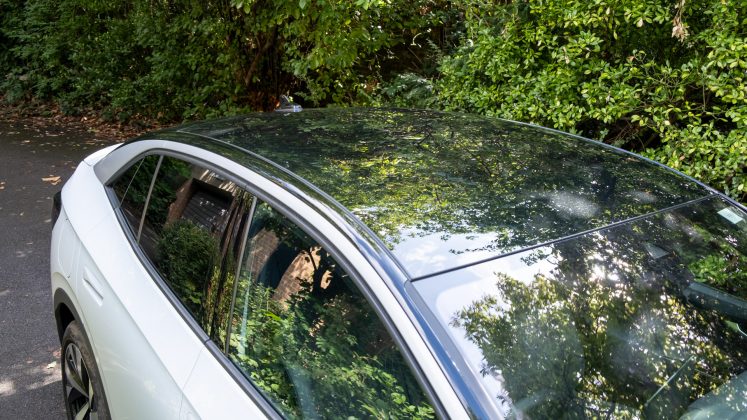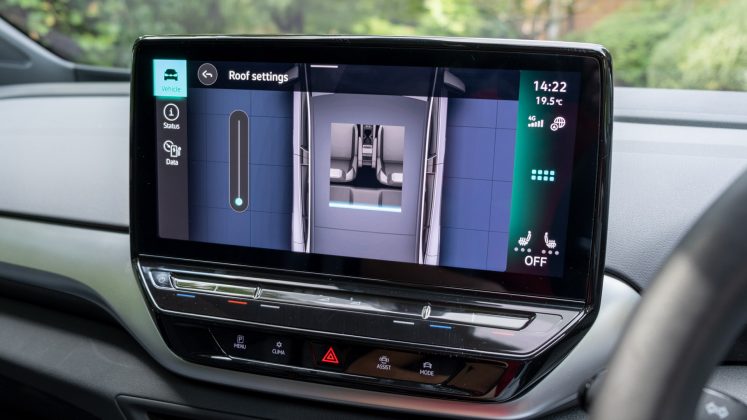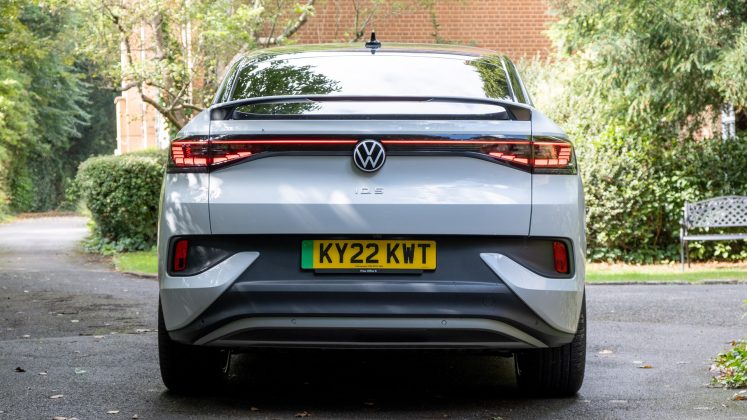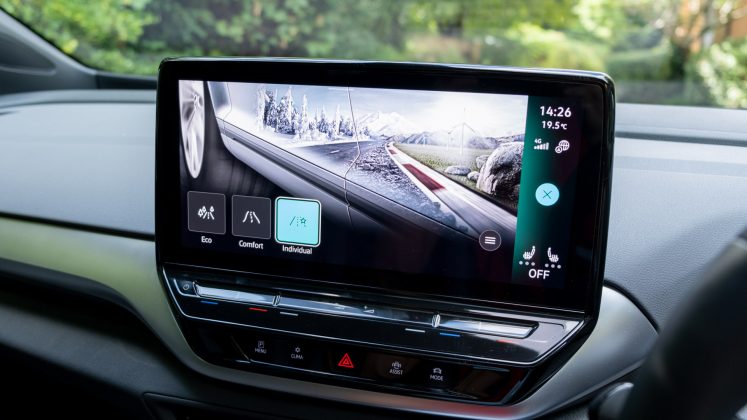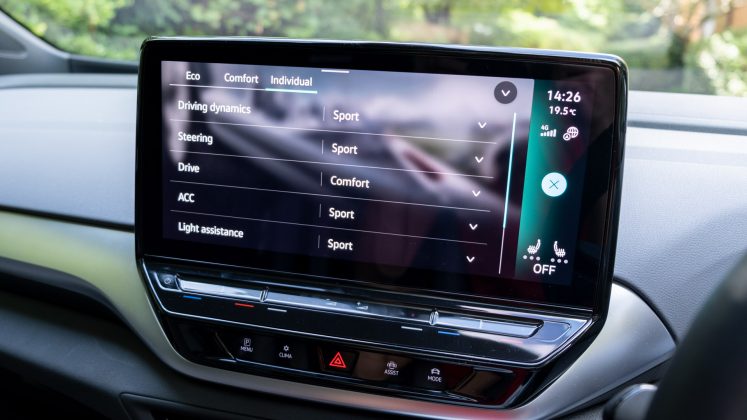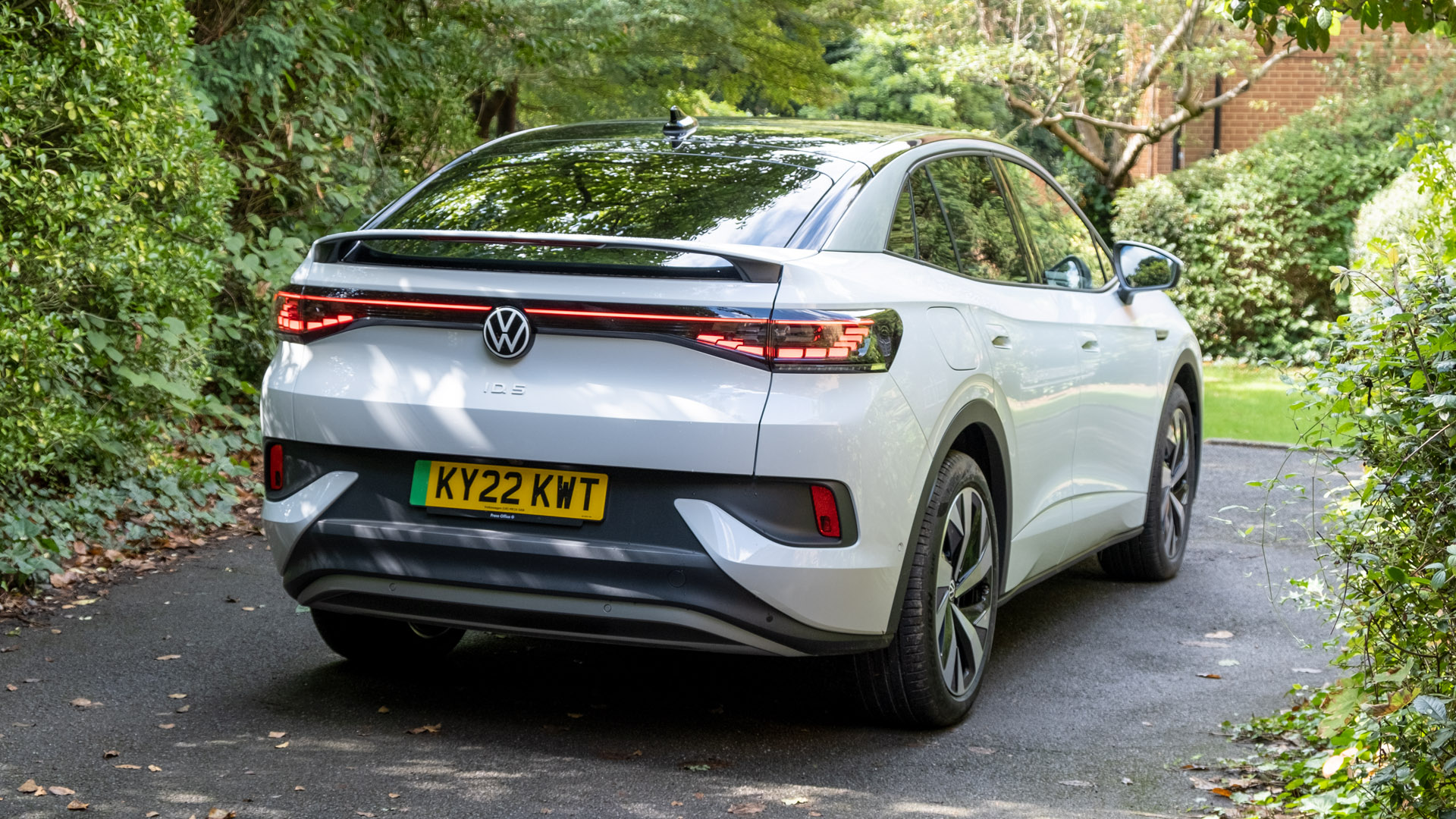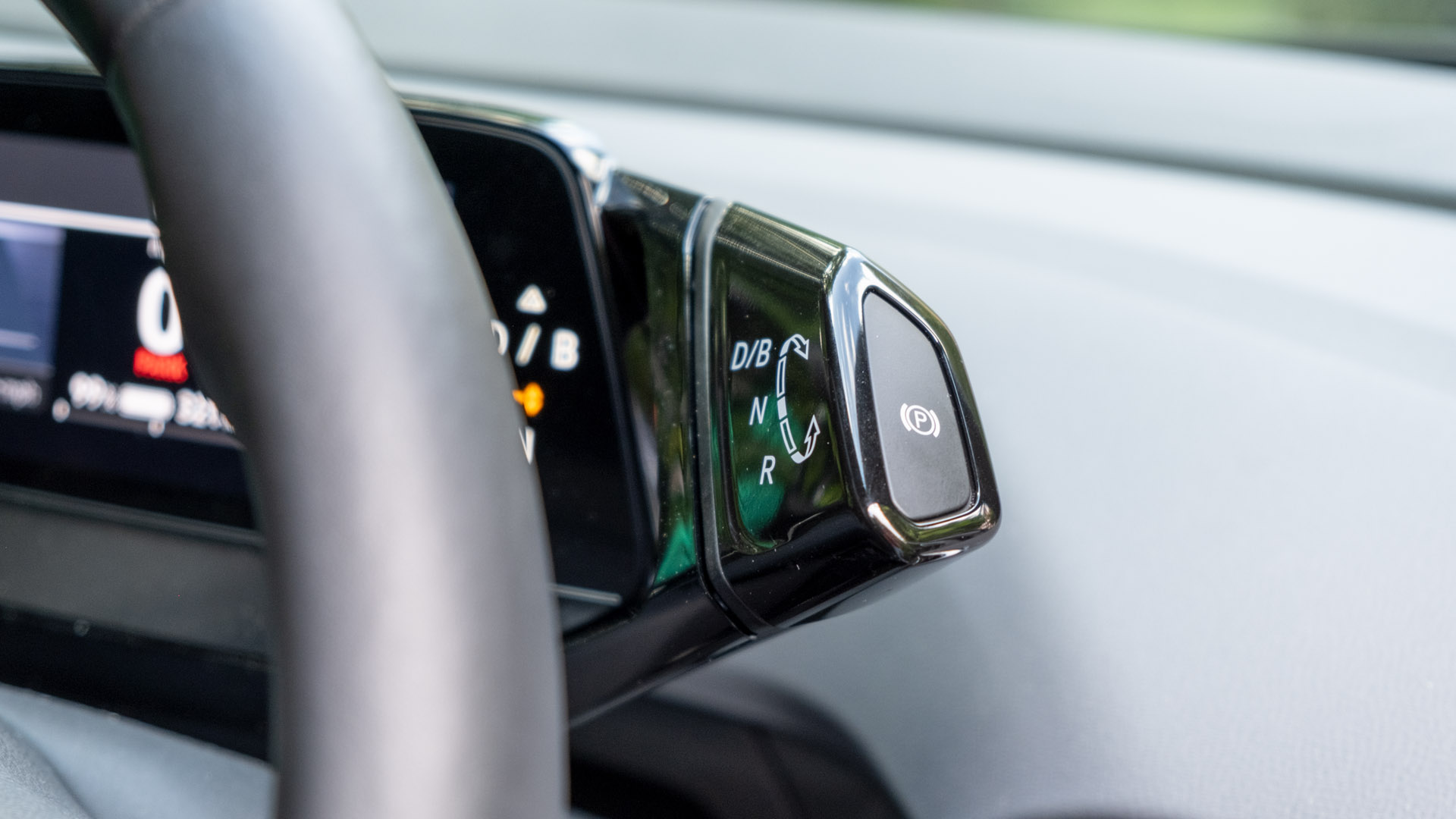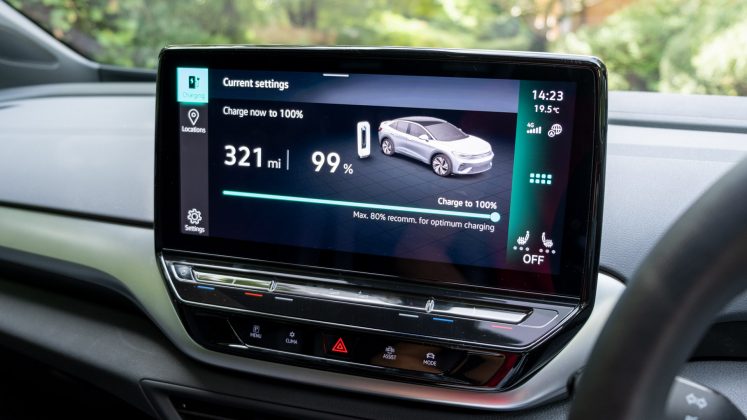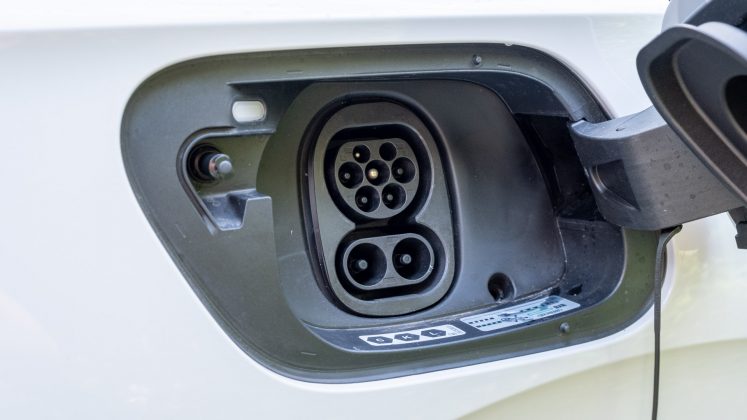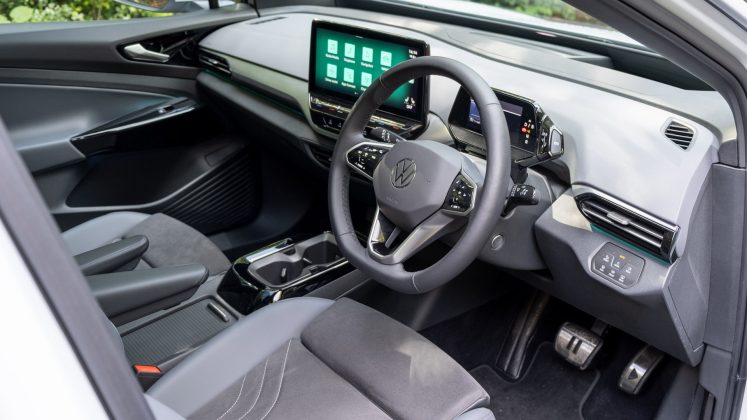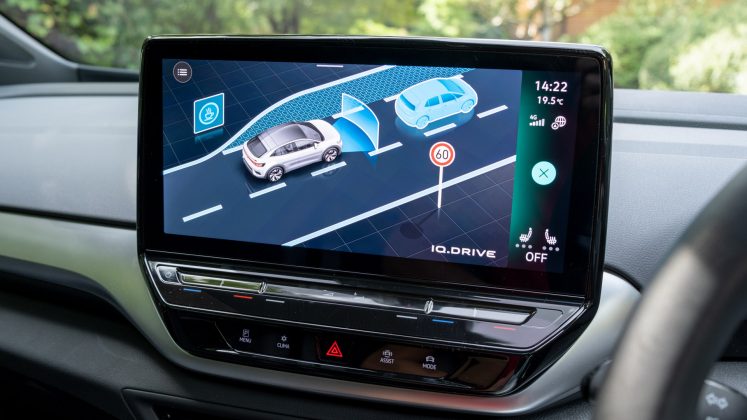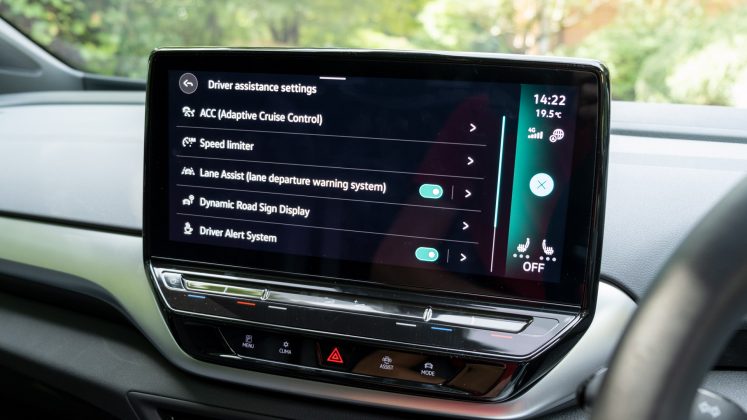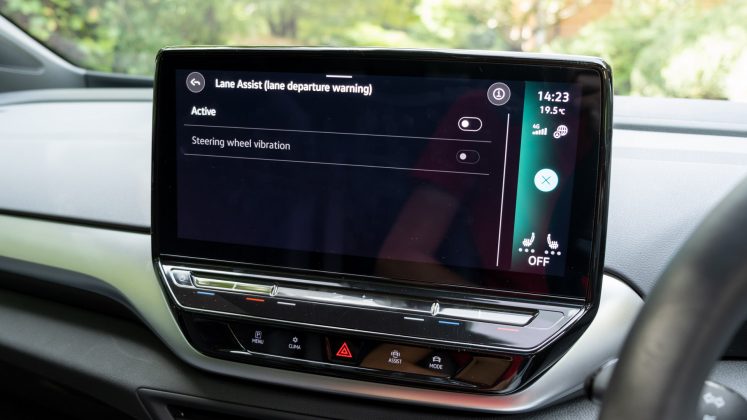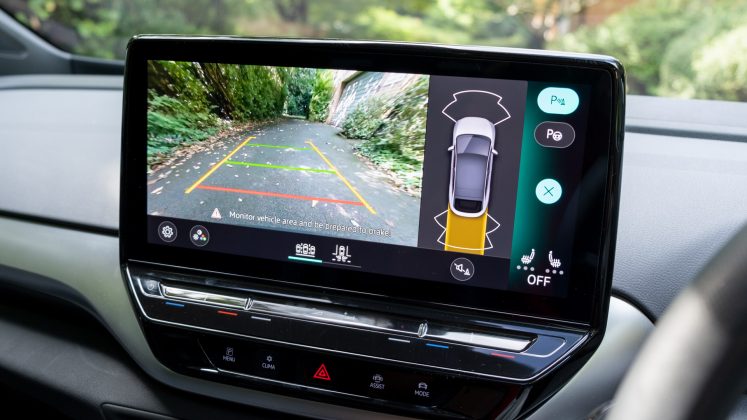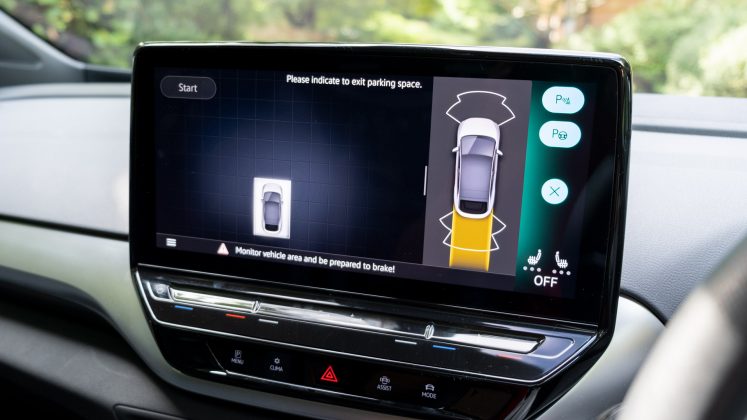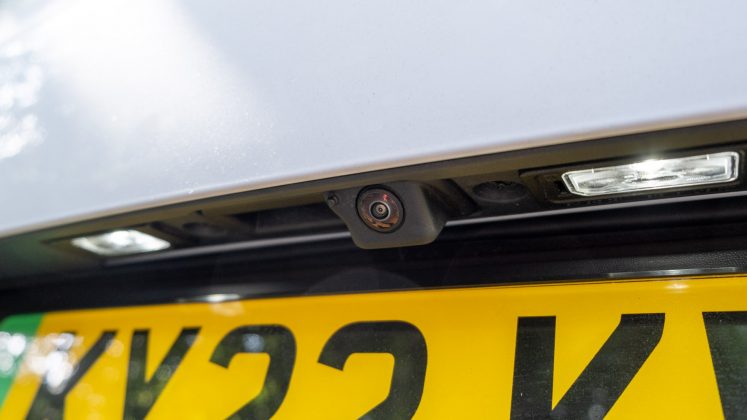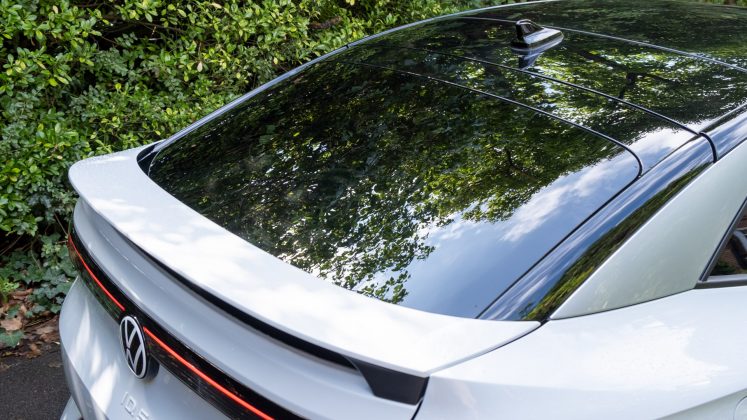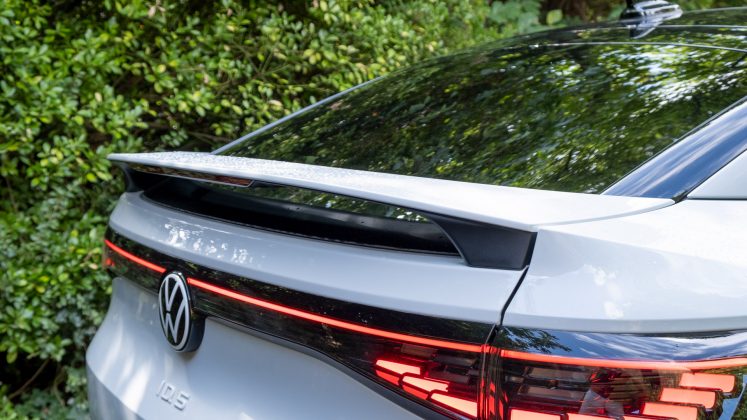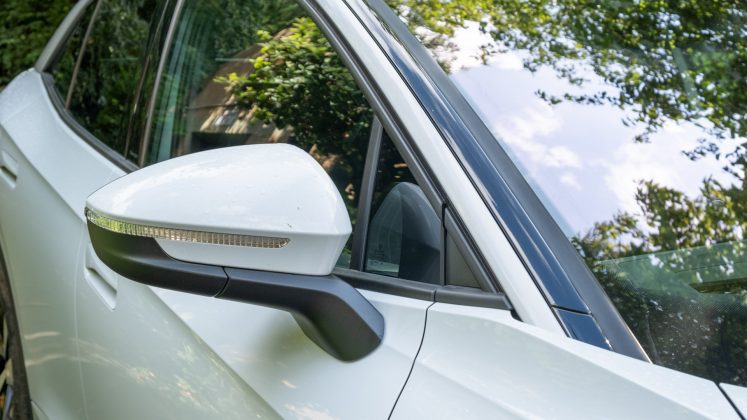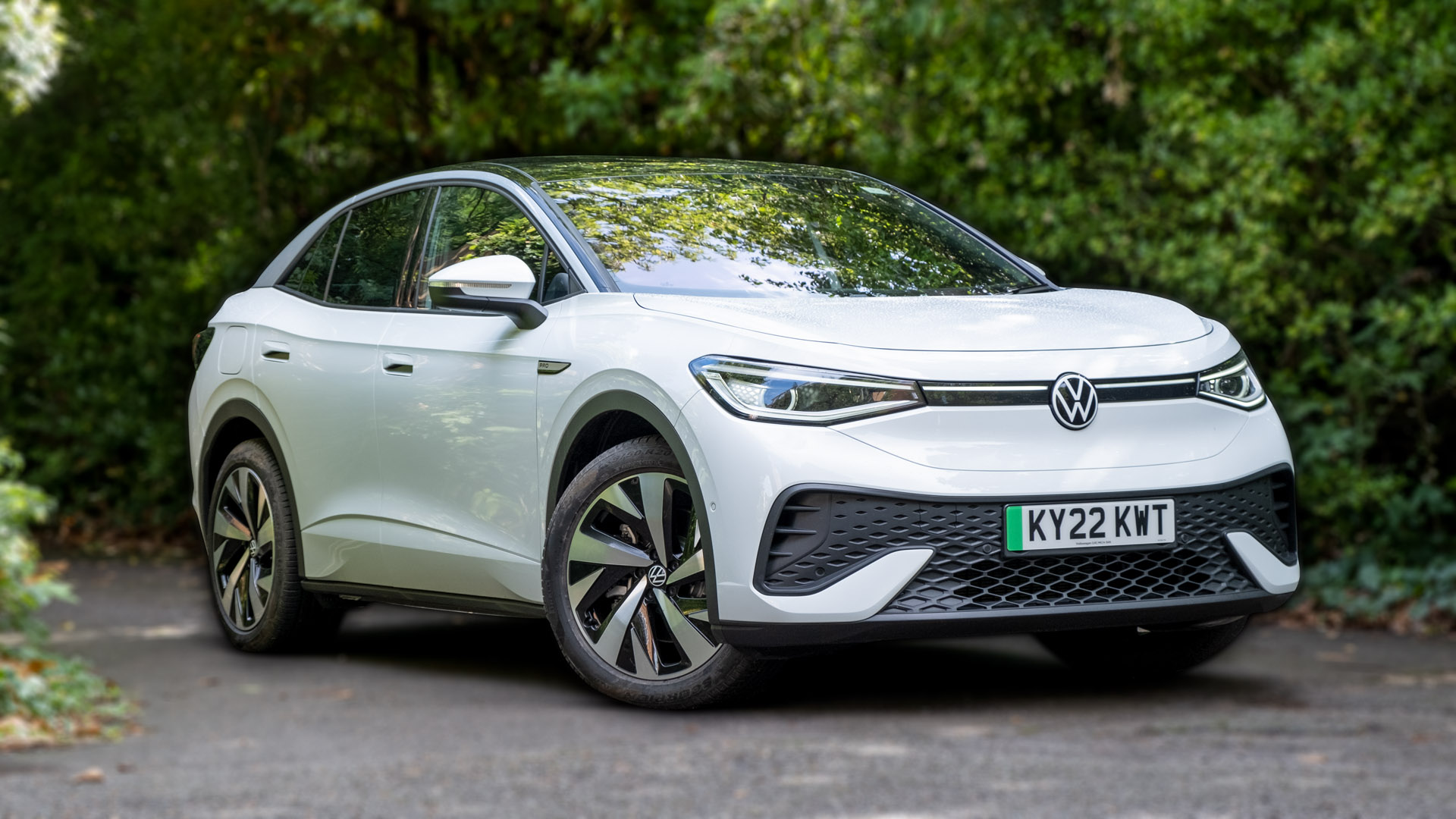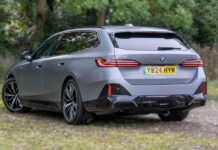The ID.5 is Volkswagen’s first all-electric SUV Coupé. It’s a more compact alternative to the brand’s first electric SUV, the ID.4. Both share many similarities, from their futuristic exterior and interior designs to the availability of purchasing either in different configurations.
Equally, both have plenty of competition from rival manufacturers like Tesla, Volvo, Hyundai et al. providing compelling options, to Volkswagen Group’s very own, Audi and Skoda. So, how does the ID.5 compare to other EVs?
If you’d prefer to watch a review of the Volkswagen ID.5, head on over to our YouTube channel.
VW ID.5 price & competition
At the time of writing and in the UK, the Volkswagen ID.5 is available in three rear-wheel drive (RWD) ‘Pro’ configurations: Style at £50,625, Tech at £54,020, and Max at £57,635. These all have an 81 kWh (or 77 kWh net) battery pack, 128 kW (172 hp) of power and 235 Nm of torque. Should you want a bit more grunt, you’ll want the ‘Pro Performance’ line, which ups the power to 150 kW (201 hp) and 310 Nm of torque – the Style costs £52,100, Tech £55,495, and Max £59,110.
There’s also the GTX 4MOTION Style, an all-wheel drive (AWD) variant that has the same battery pack as the aforementioned models but 220 kW (295 hp) of power and 460 Nm of torque. It costs £56,460.
When it comes to competition, there are numerous all-electric SUVs to consider: the MG ZS EV from £29,495; the Citroen e-C4 from £30,995; the Hyundai Kona Electric from £31,325; the Vauxhall Mokka-e from £32,695; the Peugeot e-2008 from £33,700; the Kia Soul EV from £34,995; the Kia Niro EV ‘2 64’ from £36,245; the Volkswagen ID.4 from £37,290; and the Skoda Enyaq iV 60 from £38,380. You’ve also got the MG5 EV, an all-electric estate that starts from £30,995.
There are also a few ‘premium’ SUVs to consider, such as: the Hyundai Ioniq 5 from £41,900; the Kia EV6 from £44,195; the Ford Mustang Mach-E from £50,030; the Mercedes EQA 250 from £47,510; the Audi Q4 40 e-tron from £48,215; the Volvo XC40 Recharge from £45,750; the Tesla Model Y from £51,990; the larger Audi e-tron from £62,035; the BMW iX3 from £62,865; the Jaguar I-Pace from £66,350; the Mercedes EQC from £70,035; and the Tesla Model X from over £102,980.
Read next: Volkswagen ID.4 review: Better than the VW ID.3?
VW ID.5 exterior review
From the exterior, the ID.5 is similar to the ID.4 with its curvy profile and forward-thinking design implementations – from its stylish front bumper and elongated taillights to the use of integrated door handles to reduce the drag coefficient.
The biggest differentiator between the two Volkswagen vehicles is the ID.5’s sloped roofline, which gives it a sportier look, especially with the use of the integrated spoiler. Depending on the trim level, you’ll find either 19″, 20″ or 21″ rims fitted as standard, with options available in those sizes, too. We had the “8J x 19-inch ‘Hamar’ Black diamond-turned surface” wheels fitted to our test vehicle.
As for your paint options, ‘Moonstone Grey Black’ comes as standard, while the metallic ‘Blue Dusk’, ‘Grenadilla Black’, ‘Scale Silver’ (GTX only) and the pictured ‘Glacier White’ cost £690. The ‘Kings Red Premium’ costs £835.
Read next: New MG ZS EV review: Still the best budget electric SUV?
VW ID.5 interior review
Moving inside, there are yet again many similarities that can be drawn with the ID.4 – in fact, it’s almost impossible to differentiate between the two. Those with a keen eye, however, will notice that the size of the centre-weighted display is slightly bigger, sitting at 12″ up from the 10″ size of its sibling (the larger size is available in the GTX and Max trims of the ID.4).
The infotainment system itself has also had a refresh, with the German automaker taking on feedback from its customers who felt it was sluggish. Indeed, software optimisation from Volkswagen means that the ID.5’s display is even more fluid than previous generation offerings, while retaining an intuitively laid-out menu system. We like that there’s even a means of adding your country’s flag in place of the virtual home button – a potential nod to the Euros football.
However, we still encountered a few technical glitches where the screen became unresponsive. This seemed to occur more frequently when using Android Auto wirelessly. Much like Apple CarPlay, the third-party mobile operating system is supported both over a wired and wireless connection.
Better still, navigation data from these systems is fed through to the customisable 5.3″ instrument cluster and the fabulous Head-Up Display (HUD), which comes fitted as standard in the Tech trim or above. Should you want the virtual driver’s display in the Style trim, you’ll need to splash out £1,350 on the Infotainment Package Plus option. This also adds an audio upgrade, which gives you an additional speaker in form of a subwoofer – taking you from six speakers at 140 Watts to seven with a whopping 450 Watts. If you’d like to hear how the latter configuration performs, watch our detailed review of the system on YouTube.
While it’s all pretty positive, it is disappointing that Volkswagen has retained capacitative buttons and touch sliders throughout the cabin. It’s a theme that the automaker has adopted with its modern vehicles and we’re sad to see the omission of more practical physical buttons and knobs. This will certainly put off a few consumers and with haptic buttons along the steering wheel that can be accidentally initiated when cornering at speed, it could lead to some rather frustrating experiences.
Similarly, the manufacturer has retained the integrated pressure sensor within the driver’s seat. When the main occupant is sat down, the vehicle will power on whereby pressing down on the foot brake triggers the vehicle’s ignition.
This might seem intuitive for those stepping in and out of the vehicle as a solo occupant, but should you have another individual within the cabin who chooses to stay put, the vehicle will power down. Leaving any individual inside without any climate controls or entertainment. Even if the key fob is left inside, an occupant will have to reach over to the on/off capacitative button at the centre of the dashboard or press the physical start/stop button found on the right-hand side of the steering column – not ideal if you have teenagers sitting at the back. We wish the manufacturer had integrated an option to disable this behaviour.
On the subject of interactions, the gear selector, which is identical to the one found on the ID.3, ID.4 and similar to the one housed within the BMW i3, resides next to the instrument cluster. It will take a little while for some to get used to, but once you get the hang of it, flicking to reverse or drive/B-mode becomes second nature. Pressing the button located at the side puts the car into Park.
Read next: Hyundai Kona Electric review: Kia e-Niro alternative?
VW ID.5 storage review
The placement of the vehicle’s gear selector is done on purpose – it saves space by the centre console. Here, you’ll find two cupholders, a retractable cover that reveals a convenient place to store your smartphone, two USB Type-C ports for charging and connectivity, and a larger-sized storage bay that can be customised through the use of two removable plastic inserts.
Elsewhere, you’ve got the glove compartment and the door bins, which at the front are large enough to fit a 500ml bottle and a purse or wallet. The ones at the rear are a lot smaller. Should rear occupants want to take a hot or cold drink with them, they’ll have to sacrifice the middle seat as there are two cupholders found within the rear armrest.
As for the boot, there’s a whopping 549 litres with the seats up and with them put down, this figure extends up to 1,561 litres. Furthermore, there’s a compartment for your charging cables under the boot floor.
Here’s how it compares to other electric SUVs: Tesla Model Y (854/2,100 litres); Audi e-tron (660/1,725 litres); Skoda Enyaq iV (585/1,710 litres); VW ID.4 (543/1,575 litres); Hyundai Ioniq 5 (520/1,587 litres); BMW iX3 (520/1,560 litres); Jaguar I-Pace (656/1,453 litres); Audi Q4 e-tron (520/1,490 litres); MG5 EV estate (464/1,456 litres); Kia e-Niro (451/1,405 litres); Peugeot e-2008 (434/1,467 litres); MG ZS EV (448/1,375 litres); Kia EV6 (490/1,300 litres); Volvo XC40 Recharge Twin (452/1,328 litres); Ford Mustang Mach-E (402/1,420 litres); Kia Soul EV (315/1,339 litres); Citroen e-C4 (380/1,250 litres); Mercedes EQA (340/1,320 litres); Mazda MX-30 (341/1,146 litres); Hyundai Kona Electric (332/1,114 litres); Vauxhall Mokka-e (310/1,060 litres).
In terms of convenience, the Style trim doesn’t have an electric tailgate which might be a concern for shorter individuals. Thankfully, all the other trims feature an electronically-operated boot as standard and all have a hatchback design.
Elsewhere, the rear split-folding seats have a 60:40 design with an integrated ski latch, making it convenient to transport elongated goods. Should you want to take even larger items you’ll also be pleased to learn that the ID.5 has a near-flat loading bay, a plastic boot lip protecting your paintwork, side storage bays, hooks and fastening points and a 12V socket for charging. Note, unlike some other electric SUVs, the ID.5 doesn’t have a frunk or front storage compartment under the bonnet.
Read next: Skoda Enyaq iV review: The Volkswagen ID.4 alternative
VW ID.5 comfort review
When it comes to comfort, the ID.5’s seats are very accommodating and provide the right amount of support. The front two are electronically adjustable and heated. Front passengers also have pulldown armrests, which further bolsters the vehicle’s comfort.
When it comes to headroom, the SUV offers exceptional amounts of room at the front. However, due to its sloping roofline, 6-foot 2-inches (188cm) individuals who are sat at the rear might feel a little henned in. This is where the VW ID.4 and a few other larger-sized electric SUVs such as the Skoda Enyaq iV provide a more spacious cabin.
With that said, Volkswagen still provides excellent legroom at the back allowing taller individuals to slouch. It’s great to see the manufacturer has integrated a near-flat transmission tunnel, allowing the rear middle occupant to be comfortable on longer journeys. A small, but yet appreciated touch by the German automaker.
On the subject of comfort, the ID.5 comes fitted as standard with a panoramic glass roof and an electronically retractable sunshade. This brings in a lot of additional light within the cabin while still protecting you from UV rays due to the vehicle’s glass coating. The sunshade is ingeniously adjusted via a touch-sensitive button found towards the rearview mirror and more so, can be controlled to your heart’s content via the infotainment system – you can see it in action on our TikTok, Instagram or YouTube.
As for cabin noise, the ID.5 is pretty well insulated and provides a quiet environment. While it won’t compete with more expensive SUVs, such as the Audi e-tron or e-tron S, it’s still a little more serene than the likes of the Tesla Model Y.
Read next: Kia EV6 review: The Hyundai Ioniq 5 alternative
VW ID.5 performance review
The vehicle’s quieter cabin and somewhat soft suspension setup yield a comfortable driving experience in and around the city. Potholes, speed bumps and anomalies are largely soaked up by the vehicle’s configuration. One shouldn’t mistake this as a floaty SUV, however, as without adaptive suspension it’s no match to the aforementioned Audi vehicles.
Equally, the VW doesn’t have a sportier setup to prevent it from leaning on windy country roads. One will notice a bit of body roll and with the lacklustre steering input, the vehicle doesn’t entice you to go fast. There is, of course, the ability to set it to its ‘Sport’ present through the infotainment system, which stiffens up the steering wheel, suspension and sharpens up the accelerator. Still, in said mode, it can’t compete with the likes of the BMW iX3 or Jaguar I-Pace, which both excel in this department.
Buy a car phone mount on Amazon (Affiliate)
Equally, its competitors trump the ID.5’s straight-line performance. The model on review is the rear-wheel drive (RWD) ‘Pro’ variant that has a measly 128 kW (172 hp) of power and 235 Nm of torque. We had it tested from 0-60mph using Racelogic’s Vbox Sport, at 9.42 seconds. In electric terms, that’s pretty slow. One can opt for the ‘Pro Performance’ which should yield a time of sub-7.5 seconds or the GTX model which brings the time down to a tested 5.96 seconds. Top speed on the latter model is rated at 112mph, with the vehicle on review sitting at 99mph.
Those wanting an exhilarating electric SUV might want to consider the Tesla Model Y, the Volvo XC40 or C40 Recharge, the Jaguar I-Pace or the ridiculous tri-motor Audi e-tron S. But those buying the ID.5 might not care too much about straight-line speed, but rather its practical electric range. Indeed, the VW surprisingly shines in our controlled tests, surpassing every other electric SUV that we’ve tested to date.
In our mixed driving routes, we netted a staggering 325 miles from its 77 kWh battery pack (81 kWh gross); our tested vehicle had the optional £1,050 heat pump installed, which is something we’d recommend on every modern EV, especially if you live in a country that has a cooler climate, like the UK. Putting the ID.5 up against its rivals, it surpasses: the Skoda Enyaq iV 80 (300 miles); the Tesla Model Y Long Range (260-280 miles); the Audi Q4 40 e-tron, Kia Soul EV, Kia e-Niro, Hyundai Kona Electric and heat pump-less VW ID.4 all of which achieve 260 miles; the Kia EV6 RWD (240-260 miles); the AWD variants of the Volvo XC40/C40 Recharge, Hyundai Ioniq 5 and Jaguar I-Pace at 230-250 miles; the BMW iX3 and Ford Mustang Mach-E at 230-240 miles; the Mercedes EQA at 210-220 miles; and the Citroen e-C4 at 180-200 miles. Suffice to say, the figure we attained is seriously impressive and is one of the vehicle’s best selling points.
When it comes to recouping energy back into the battery pack, there’s regenerative braking. Unfortunately, it’s nowhere near as harsh as some of its competitors to allow for a true one-pedal driving approach; there’s around 0.25g of deceleration when in B-Mode. This way of driving might not be to everyone’s liking, but having the option to customise the level of deceleration, like you’d find on vehicles from the Hyundai Group would have been appreciated.
To recharge the vehicle rapidly, Volkswagen has integrated a 135 kW input via the CCS charging port. This will take you to 80% charge from 5% in 29 minutes. Opt for a 7.2 kW input via the Type 2 port and it’ll take 12 hours from 0-100% – if you have access to a 3-phase 11 kW power supply, the onboard charger will allow you to attain this level of charge in 8 hours instead. A 3-pin plug will take a whopping 36 hours.
What stands out from other electric Volkswagen vehicles is bi-directional charging. For the first time, the German automaker has allowed reverse power transfer, allowing you to feed energy from your vehicle’s battery pack into a home power wall via its CCS port; a rarity for the connector type. At a later date, it’s said that the ID.5 will be able to feed energy back into the grid, allowing you to effectively make money by getting paid by the grid. It’s a means of futureproofing the vehicle, and we’re all for it.
Read next: Tesla Model Y review: Best electric SUV?
VW ID.5 safety review
As for safety, the ID.5, like its sibling the ID.4, scored an identical 5/5 stars in Euro NCAP’s crash tests. Safety for Adult Occupants sits at 93%, Child Occupant at an impressive 89% and also scores 85% in the Safety Assist tests.
On the subject of driver assistance systems, the ID.5 integrates an LED strip on the dashboard that helps notify you of any imminent danger. Here, if you fail to stop on time, ‘City Emergency Braking’ and ‘Front Assist’ will kick in to illuminate a red light through said LEDs. The ‘Driver Alert’ system also has fatigue detection, which gives you slight peace of mind.
Adaptive Cruise Control (ACC) also helps take the strain off mundane motorway drives and does a great job of maintaining a safe distance from the vehicle in front of you. However, we did find that it would sometimes pick up slip road signs and unnecessarily decelerate the vehicle. Not what you or the driver behind you want to experience when driving at 70mph.
Elsewhere, we weren’t too impressed by ‘Lane Assist’, which much like the ID.4 and ID.3, it feels primitive. It’ll only give you a gentle reminder if you’re going off-piste and won’t provide full steering support. Given the price of the ID.5, one might expect a more advanced system to be in operation.
A further annoyance is that the assistance system is enabled by default each time you turn on the vehicle. Given there are no physical buttons on the dashboard, you’ll have to navigate through the infotainment system each time you step foot inside the vehicle – it’s extremely cumbersome for those who don’t want or require lane assist to be in operation at all times.
It’s also disappointing that there’s no blind-spot monitoring system integrated through the vehicle’s LED strip or side-view mirrors. Lane Change Assist, which aids with this only becomes available in the Tech trim or above.
When it comes to parking, the ID.5 comes with front and rear sensors, and a rearview camera. Much-needed as rearview visibility is limited due to the vehicle’s sloping roofline and use of a spoiler. Should you want to better the experience, Area View in the Tech trims or above provides full coverage of the vehicle’s exterior. Elsewhere, the ID.5 has a 10.2-metre turning circle, which is pretty impressive for a vehicle of its size; the GTX model sits at 11.6 meters, instead.
Read next: Volvo XC40 (C40) Recharge review: A powerful luxury electric SUV
TotallyEV’s verdict on the Volkswagen ID.5
On the whole, the VW ID.5 is a well-rounded electric Coupé-styled SUV. It’s one of the longest-range EVs we’ve tested to date, provides an aesthetically pleasing package from both the exterior and interior, is comfortable and easy to drive and has a few exciting features such as bi-directional charging.
However, despite its competencies, it’s nowhere near as fast as one might expect, has a few quirks that are hard to ignore and most importantly is pretty expensive. With a starting price of £50,625 without options, it’s hard not to consider viable alternatives.
Would you pick the VW ID.5 over rival offerings? Let us know in the comments section below or via social media; we’re on: YouTube, Instagram, Facebook, Twitter and LinkedIn.

